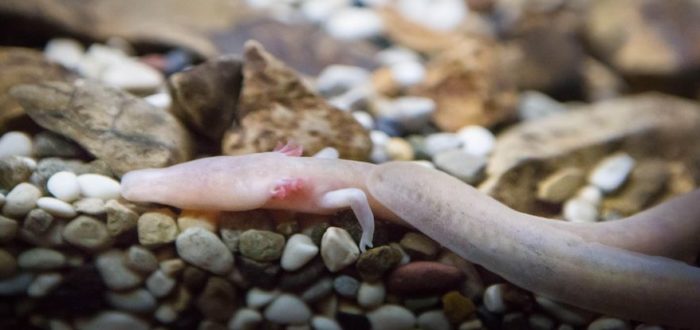The eyeless subterranean salamanders, called “baby dragons” live in the watery depths of Postojna Cave (Slovene: Postojnska jama). This rare species is currently under threat, but Slovenian scientists do all possible to leave hope for survival of gentle creatures. Postojna Cave is one of the most popular tourist sights in Slovenia. Moreover, it belongs to the Europe’s longest cave networks and refer to the world’s most spectacular subterranean tourist destinations. Each year, crowds of tourists come to Postojna Cave to gaze at its numerous nature wonders. They spend days here admiring the cave’s giant stalactites and stalagmites, clouds of coloured rocks and bridges that the Pivka River has been carving out of the local limestone for millions of years, and, of course, the huts of the world’s most unusual creatures – the blind aquatic salamander Proteus anguinus or olm (or človeška ribica, as it is called by locals). Slovenian scientists have launched a project that could have profound impact on the future of this remarkable species. Now, the Postojna Cave is a home to 21 baby dragons. Over the past year, they grew from 2 to 7 cm. The scientists do all possible to breed a colony of olms and preserve this amazing Slovenia’s wonder.




